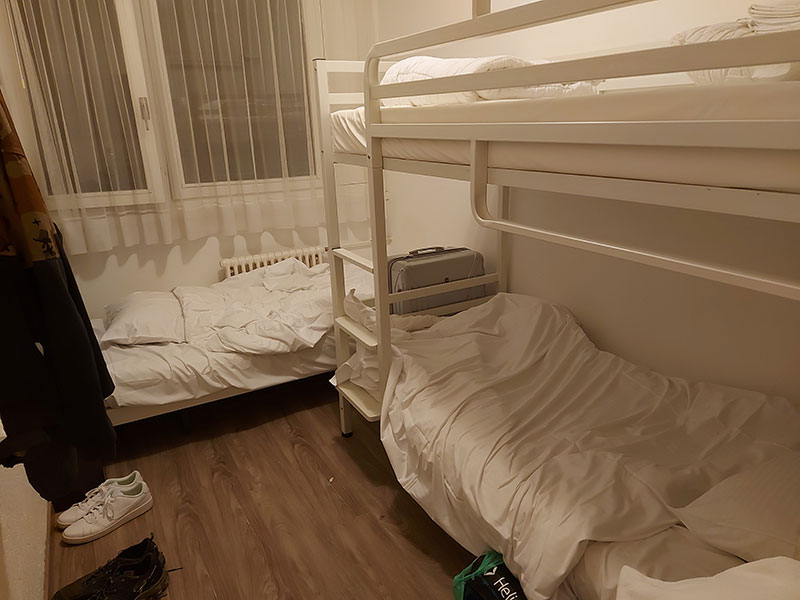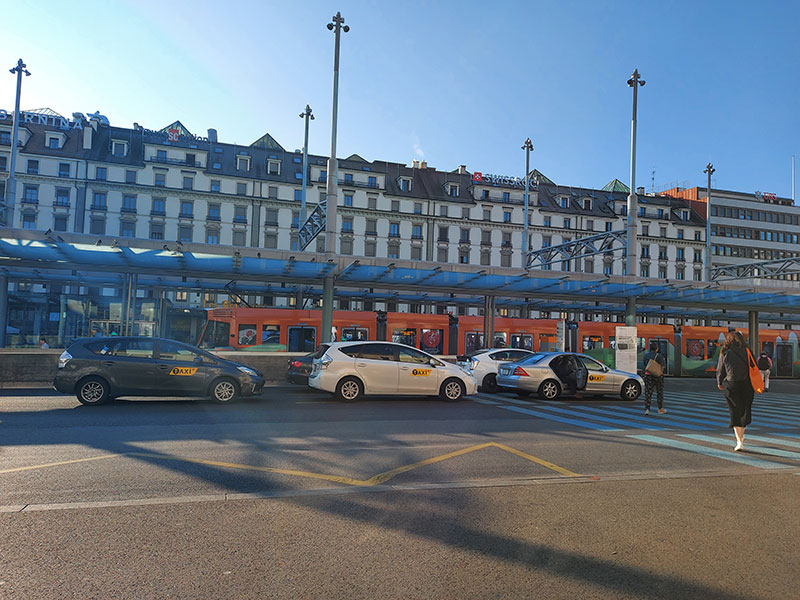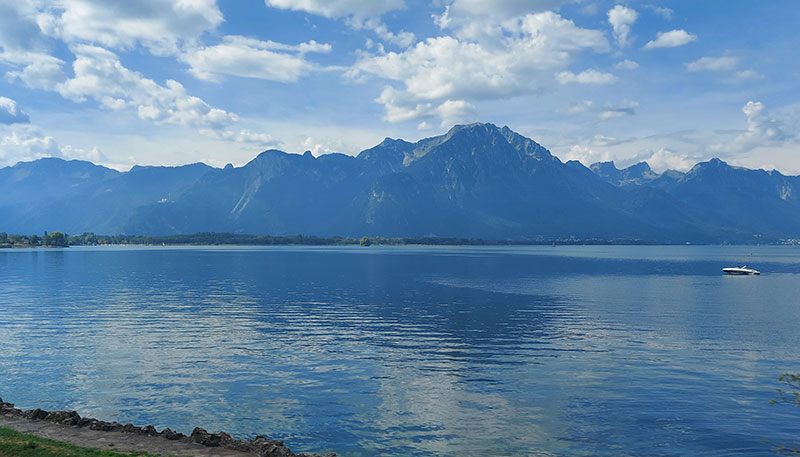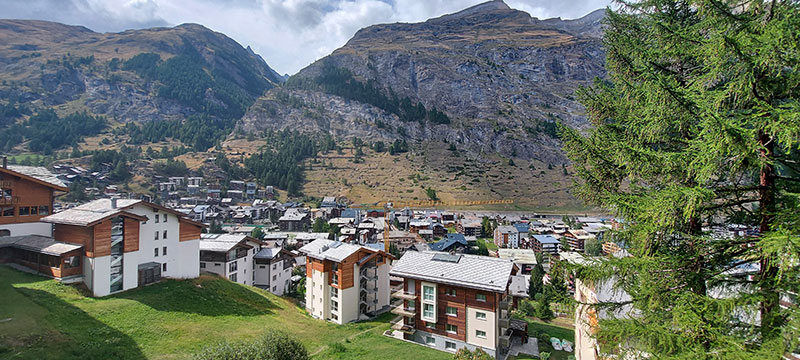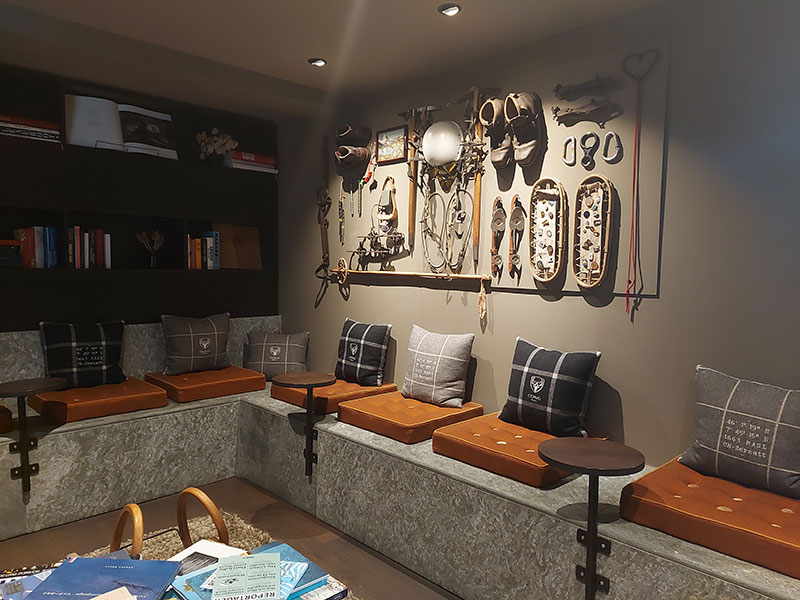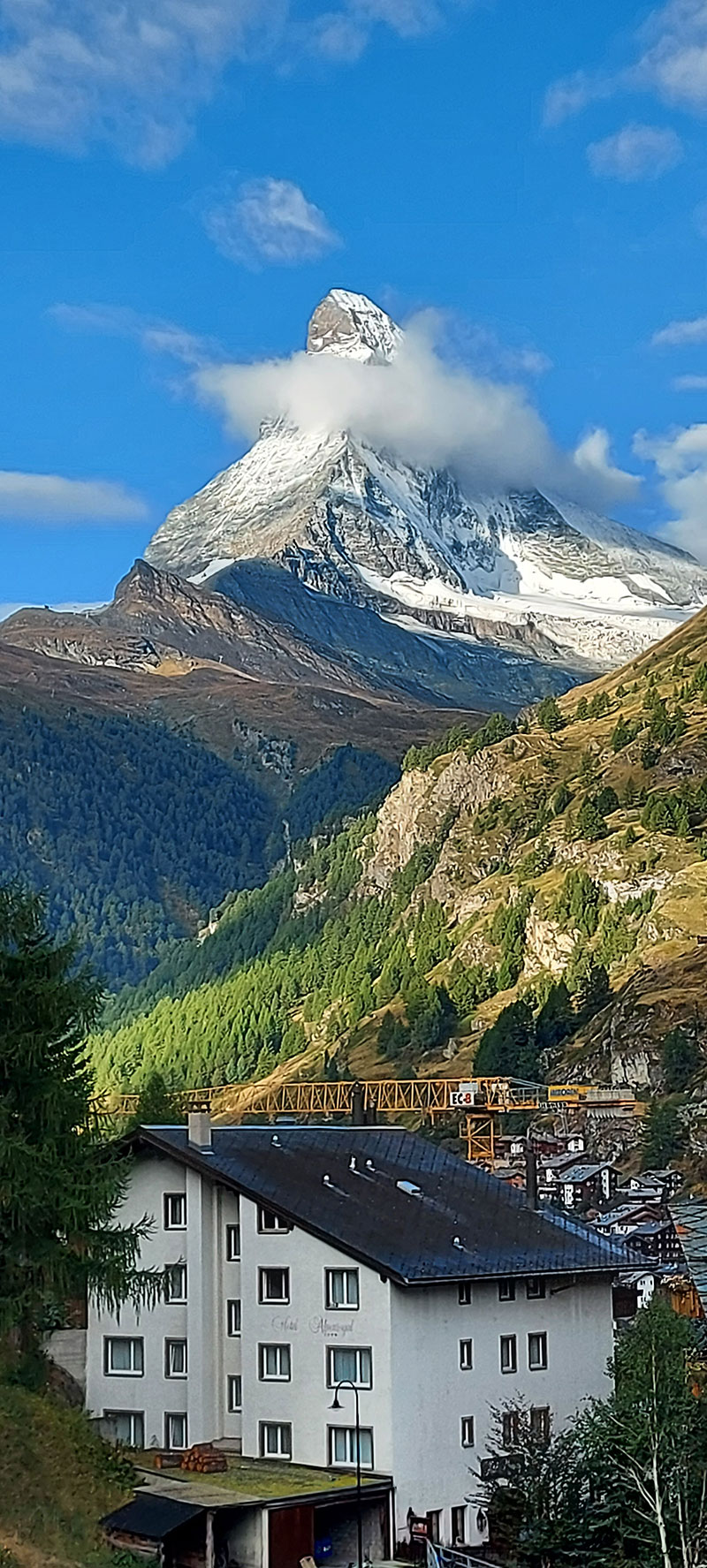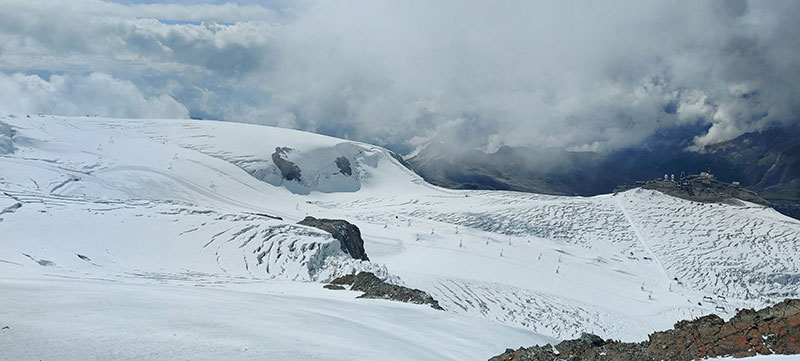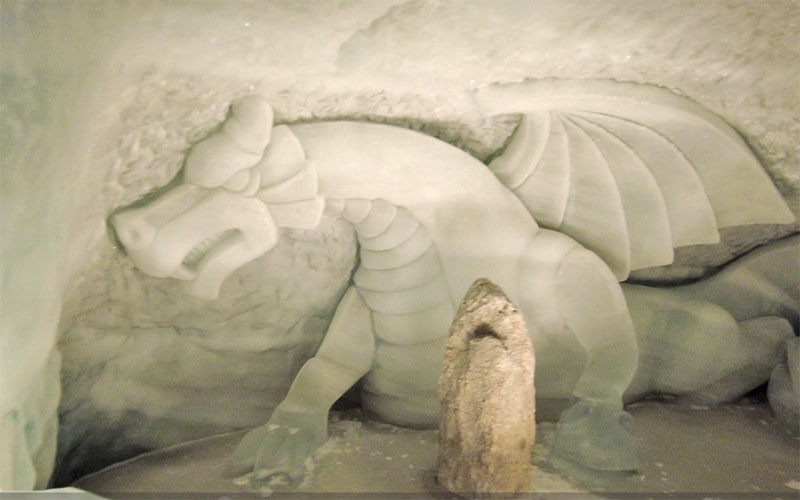Previous trips had seen me arrive by train and shuttle bus and pass straight through, so waking up in the de facto capital of French Switzerland was a new experience. My task for the day was to regroup after the long opening day and make my way to Zermatt, which was still a surprisingly long way away.
With a late, very late, arrival the night before and a 3 hour 40 minute journey to Zermatt necessitating an early start I really didn’t see the point in splashing out on an expensive city centre hotel so for the first time in years I’d opted for a hostel just a few hundred metres from Geneva Cornavin, the central station. My only experience of hostels, apart from the YHA, had been 40 years before so City Hostel Geneva was a pleasant reintroduction. It helped that I was sharing a dorm with just one other person, and he was as delighted as me to find we shared a native language, but after half an hour of pleasantries and back stories I’d succumbed to the inevitable and was fast asleep.
The walk from the hostel to Cornavin was far better than I expected. Previous visits to Geneva had shown me what I could see at any airport in any country, but the walk along Rue de Lausanne showed me Switzerland waking up. The seamless flow of people, buses, trams and bicycles was something to behold. It was integrated mass transit in a way that’s so eye opening to anyone used to the carnage of British travel.
Breakfast was taken, twice, at Geneva’s main railway station thanks to a well placed mini-supermarket immediately inside the entrance and, thankfully, a phone shop solved the power problems of the next month with a USB charger. Being familiar with Switzerland’s rail system I was ready for the day ahead, my trains and connections perfectly planned and time set aside for moving from platform to platform at Visp, where I’d change to the Matterhorn Gotthard bahn. I knew Switzerland and I knew if a timetable said a train would arrive at a set time and depart at a set time it would happen. That was my first mistake.
The train I was expecting arrived at the predefined platform at the predefined time, but from the platform screen to the PA system announcement and the onboard screen there was no mention of Visp. The train was going to Brig, which was the right direction but Visp was conspicuously absent from the list of stops. With the train about to depart I grabbed my pack and bailed, returning to the platform. Of course, it turned out that the train was going to stop at Visp, but without me on board. A visit to the SBB info desk enlightened me that not every step is mentioned, and the next train to Brig would also be stopping at Visp, just half an hour later than I’d planned. The knock-on effect would mean a later connection on the Gotthard bahn and a delayed arrival in Zermatt, where an electric taxi would be waiting for me.
The journey from Geneva to Visp is just 78 miles or 125km, but it’s possibly the most underrated three and a half hours of Switzerland’s much vaunted rail system. From the bustling metropolis of Geneva to the car free resort of Zermatt it displays Switzerland in a microcosm. Between the start and end points you get to see the length of Lac Leman, with it’s tantalising promise of mountains across its waters then progress through the architectural gems of Lausanne and Montreux before reaching the mountain gateway to the French Alps at Martigny. Beyond Martigny you’re suddenly confronted with the Rhone valley, wide and fertile before reaching Visp and the start of the climb into the real mountains.
Beyond Stalden the train runs alongside the Matter Vispa, picking up tributaries as it climbs steeply towards Tasch, where the parallel road ends and the only option is the Matterhorn Gottard Bahn. It’s widely recognised as part of the Glacier Express route from Zermatt to St Moritz, but you don’t have to pay the surcharge for panoramic windows to travel this route, the view is no less mesmerising.
Two days in Zermatt is never enough, even when it’s the ninth time there. My priorities, though, were simple. While I’d been up the Gornergrat and mountain biked down from both Furi and Sunnega I’d never managed to make it to Zermatt’s Matterhorn Glacier Paradise, and while I’d spent several hours in the mountaineer’s cemetery on previous visits I’d still never ventured into the town’s Matterhorn Museum. The Glacier Paradise, being located at 3,883m was obviously weather dependent while the museum had always been an “alternative option” on previous trips. With a 2 day pass to every lift and the weather set fair, this was my chance.
There are many advantages in stopping at one of Zermatt’s top hotels, Cervo Mountain Resort, from its solid environmental policies to its views over Zermatt town but one of the highlights is direct access from the lodges to the Sunnega base station by a direct lift. After a swift transfer up the hillside to my lodge I dropped my pack and headed into tow, gloriously free of the weight of my pack. Of course, within minutes it wasn’t all I was free of! Stopping to take the obligatory photo of the Matterhorn from a town centre bridge I watched my walking stick slip from its leaning post to join the Vispa and instantly head downstream to join the Rhone. In the space of 24 hours I’d managed to lose a universal plug convertor, the phone connector for my Osmo Pocket 2 (I discovered later) and my walking stick and have my first train mishap. It wasn’t the most auspicious return to Zermatt and losing things at this rate was anything but sustainable.
From the 1300s until the mid-19th Century Zermatt was nothing more than another small collection of rudimentary rustic shacks in at the south end of the Matter Valley, not even worthy of a name on a map until the late 15th century. In the 1860s, however, all that changed when the Matterhorn attracted the attention of British society, and particularly of one Edward Whymper. The events of 1865 and the first successful summit of the Matterhorn, where 4 of the 7 climbers died, have gone down in history as one of the most iconic moments of the “Golden Age of Alpinism”. It also launched Zermatt onto the world stage as a tourist destination. 150 years later the Matterhorn is intrinsic to Zermatt, which transforms from a village to a town every winter with the influx of visitors filling an estimated 35,000 beds, and Zermatt celebrates its iconic mountain everywhere.
From the reception of the Cervo Mountain Resort to the plaques in the road outside the Monte Rosa Hotel, where the fateful ascent started from, memories of that bygone age abound. The Matterhorn Museum showcases not only the story of 1865 but contains full scale replicas of the buildings of the time, but step outside and less than a five-minute stroll away you can find yourself on a whole street where time has stood still for a century and a half. This combination of outdoor/indoor and the history of the world’s most recognisable mountain (its image appears on every bar of Toblerone) was the focus for the afternoon of my first day back.
The Matterhorn Museum sits half way between the Monte Rosa hotel and the Mountaineer’s Cemetery and is instantly recognisable. How long it taes you to go round is almost entirely up to you, depending on the quantity of films and narrations you wish to take in. If you’re expecting to see artefacts related to the mountain and Zermatt you won’t be disappointed, with everything from old to modern climbing boots and from the fateful rope that broke, causing the death of the four climbers, in 1865 to full scale houses. Videos explain the events of the day and its historical impact, and of course there’s the opportunity for some retail therapy with a reminder or two of Zermatt.
Outside the museum a right turn along Barnhofstrasse will take you to the railway station and Zermatt’s centre. Look down as you walk and you’ll see plaques to the seven 1865 mountaineers embedded in the road. Turn right at Hinterdorfstrasse and you can walk down to the Vispa along the same streets, between the same houses, as those mountaineers from a different age would have walked. Here Zermatt seems a million miles away from a tourist hotspot, if you exclude or avoid the flow of guides with tourist groups explaining how men and beasts would share these wooden houses and how the stone discs were there to protect against mice.
Day 3 dawned with clear skies and the chance to finally make the trip up to Kleine Matterhorn and the Matterhorn Glacier Paradise. From Zermatt it takes 3 cable cars to reach Glacier Paradise, first from the town up to Furi, then on to Trockener Steg before a final gondola to Kleine Matterhorn. The views back down into Zermatt are stunning on a good day, but between the constant announcements over the PA and the scratched windows don’t expect photos or video to do them justice.
The final leg of the journey is very much dependent on wind speeds on the upper mountain and if you haven’t felt it already the altitude will soon make its presence known. At close to 4000m breathing becomes a lit more laboured than even Gornergrat. From Zermatt to Glacier Paradise takes around 45 minutes and deposits you at the highest point accessible by cable car in Europe. Here you’re close to the Swiss/Italian border and many toursits are surprised to see a different side of the Matterhorn. From the village the view is up the Hornli Ridge, but from Kleine Matterhorn, a small summit between Breithorn and the Matterhorn, you’re looking straight at the south face.
Once at the summit you have access to 21km of skiing piste in good weather along with an observation platform onto the Theodul Glacier. Along with the obligatory restaurant and shop there’s also the Paradise itself, where a tunnel leads you inside the glacier where artists have sculpted figures from clear ice. Take your time walking through as the altitude will definitely make exercise more difficult unless you’ve already acclimatised – and wrap up, you’re inside a glacier!
The lack of snow on the Breithorn was soul destroying, a classic sign of climate change. It was a theme that continued throughout my time in the Swiss mountains. With time limited, though and the transfer to Interlaken next day it was back down into Zermatt for a few supplies and another night at Cervo. Five years previously in Zermatt I’d been sure I wouldn’t return due to health issues and while the return was welcome it was tinged with sadness at the state of the mountains with rising temperatures.

